Miarahaba anao aho,
Here is one last little ride… and then departure… From Andringitra massif in the Adringitra National Park in the Haute Matsiatra region of Madagascar, we make a short detour to the East of the island to board the famous Fianarantsoa-Côte Est (FCE) railway that connects the high plateau city of Fianarantsoa to the port city of Manakara: the ocean is at the end of the train track! It is the only passenger train in Madagascar. The 101-mile long train line was built during French colonial rule between 1926 and 1936. It carries 150,000 passengers and 15,000 tons of cargo a year. In this remote area with no other means of transport; it is a vital economic artery. The line permitted the transport of the country’s wealth to the sea and then to Europe. It includes 67 bridges and 48 tunnels. Construction involved tens of thousands of workers, at least 5,000 of which–some even argue 10,000—died in accidents. This explains in part the fierce commitment of residents to their train. The longest of the 48 tunnels is 1,072 meters long. In the tunnels passengers find themselves plunged into complete darkness; cars are not equipped with interior lights.

Wooded landscapes
The 10- hour TGV ride (Train à Grandes Vibrations) covers less than 102 miles, stopping at 18 stations and few extra stops upon request. The trip starts at Fianarantsoa station, in South central Madagascar. Are you ready for the trip ? The whistle signals the train departure. Let’s go! “TACATAC… TACATAC… TACATAC” the engine jogs… “TACATAC… TACATAC… TACATAC”, and the wagons follow… Besides the beautiful countryside along the way (wooded landscapes, tea plantations, banana forests, palms, trees of the traveler, coffee trees), there are encounters with the always endearing and warm population on this railway line. Throughout the trip, locals offer their products… Te-hisakafo ve ianao? (Are you hungry?) At each stop, villagers come running up to the arrival of the train to sell bananas, meatballs, samosas, grilled zebu sausages, donuts… then the train departs and the journey continues at a peaceful pace, about 21 miles per hour… “TACATAC… TACATAC… TACATAC”… We pass villages between the stations of Ionilahy and Mahabako before a new stop. A multitude of vendors rushes to the windows offering crayfish, cassava croquettes, cinnamon apples, jackfruit, vanilla beans, or peppercorns… After a such a journey, Voky aho (I have well eaten).
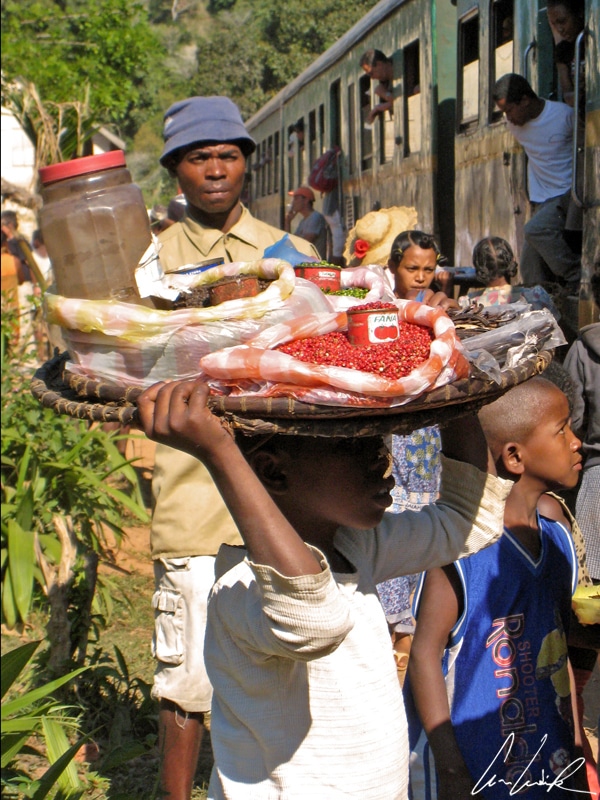
Fenoby station – Peppercorns
Children are attracted by the few first-class tourists “Vazaha.” Some generous “vazaha” are eager to give away pens or candy provoking a fight–so predictable! “It is not good to teach children how to beg…” Even though the guide of a group of “vazaha” told them not to give anything to the children… as Brassens sang, “quand on est con, on est con “, which can be translated as “when we are stupid, we are stupid.” The wait time at stations is timed by the goods to be loaded and unloaded. Consumer goods from the city are unloaded before reloading the train with coffee, bananas and other commodities. The train is vital for farmers shipping their products to the cities. After the departure of the train, the vendors return home, loaded with merchandise, and wait for the next train. Six trains a week offer them their only chance to sell their products. Everyone has the same survival problem as all rely exclusively on the train to meet their daily needs!
The CFE is not or veteran complainers for whom a delay of 10 minutes is unacceptable. If the train leaves Fianarantsoa more or less on time, it arrives when it arrives. On the schedule, the journey between Fianarantsoa and Manakara takes between 8 and 10 hours, but depending on the quantity of goods to be loaded and unload, coupling and uncoupling cars in stations, the locomotive having difficulty climbing hills after the rain (the grade reaches in some places 3.6%, a world record) and possible failures due to aging equipment and infrastructure… we should be very happy to get to Manakara at all. Just before arriving, one last curiosity: the train track crosses the runway at Manakara airport,unexpected and surprising, and one of only three places in the world where a railway crosses a runway. The other two airports are Peshawar in Pakistan and Gisborne in New Zealand. We do not know if the control tower signals whether the train can cross the runway or not! Fortunately or not, Manakara airport has few flights. Come on, one last look before leaving the train in Manakara station. Think of the lyrics of Grand Corps Malade by a French slam poet singer, “Il parait que les voyages en train finissent mal en général / Si pour toi c’est le cas accroche toi et garde le moral / Car une chose est certaine y’aura toujours un terminus / Maintenant tu es prévenu la prochaine fois tu prendras le bus,” which can be translated as, “Apparently travel by train usually ends badly / In case for you hang on and keep the faith / One thing is certain, that there will be always a terminus / but now you know: next time take the bus (Les voyages train).“
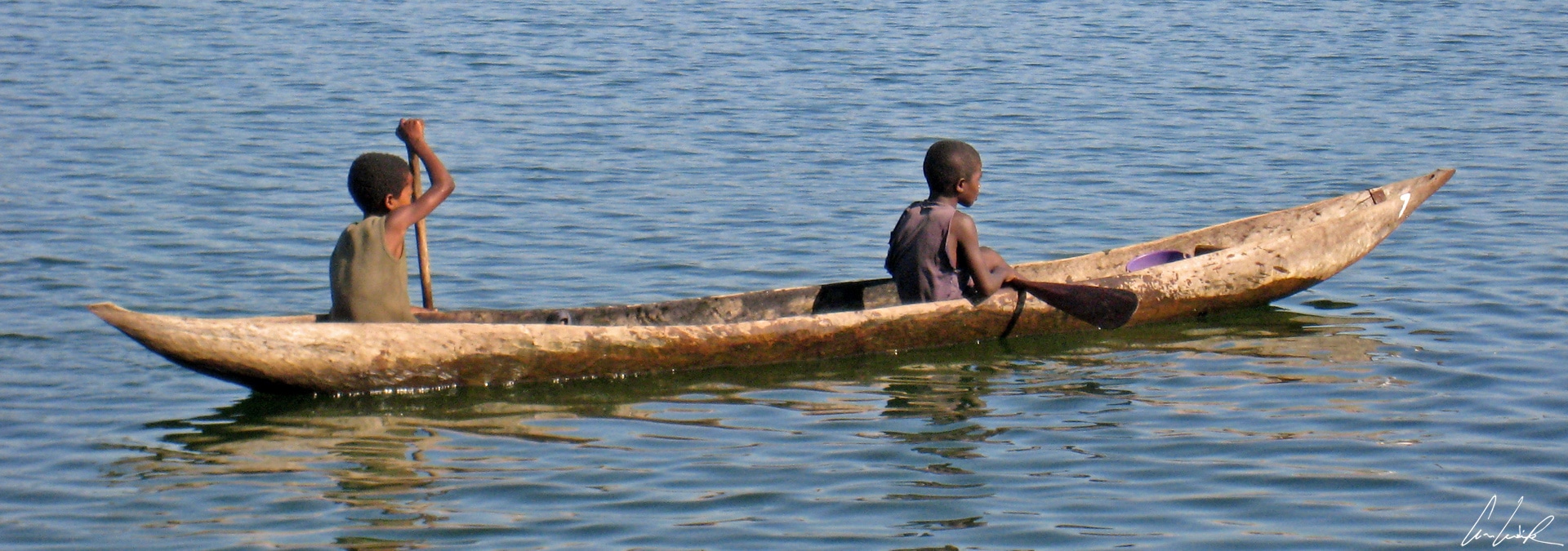
Pangalanes Canal – Wooden Eucalyptus canoes
At Manakara, we change our means of transportation… and set about to discover the Pangalanes Canal, not by bus but by canoe. Formerly, the Pangalanes Canal consisted of a line of shallow lagoons, fed by countless rivers and sheltered from the sea to the East by a line of coastal dunes. In 1896, General Gallieni ordered the construction of the canal to increase trade and exercise administrative and military control over the region. Today from Tamatave to Farafangana, the canal stretches along the coast for over 400 miles, passing through man-made lakes, waterways, and natural rivers. One could describe the Pangalanes Canal as a water mirror littered “elephant ear“, local people use the canal to transport goods, traveling in silence in wooden Eucalyptus canoes (because they do not go in the ocean). There are also cross barges loaded with goods, women fishing in the brackish water with a mosquito net, children placing traps to catch small crabs that will serve as bait for fishing, and fishing villages on stilts.

Canal des Pangalanes – Fishing villages on stilts
We disembark to visit an artisanale factory producing essential oils. Upon entering, the scents of Saro, katrafay, niaouli, iary and issa are overpowering. While strolling through the plantations we see Nepenthes also known as the tropical pitcher plant, a carnivorous flower… But if you are worried, I can reassure you. There is a happy ending for the little lizard. He escapes unharmed among the wild pineapple (a beautiful red color,) and cloves.
Soava tsàra.
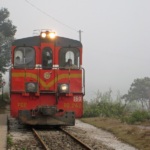

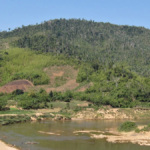
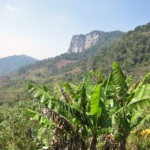

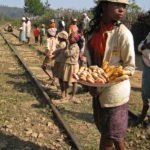

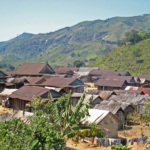
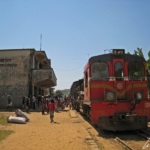

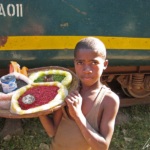

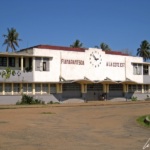

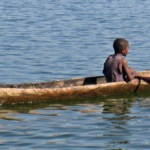
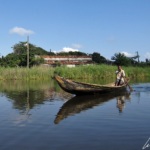
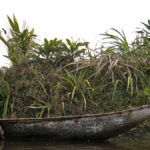



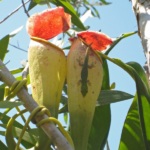




Your pictures are exceptional and I always enjoy your posts! Keep up the great work!
Thank you for your great support. I will carry on 🙂
Looks like we are quite similar in choice of destinations. I have been to Northern Madagascar as well a couple of years ago. You have some beautiful photos. I really wish to return to Madagascar visiting the eastern part and doing a similar itinerary like yours.
Madagascar is really a land of contrasts, of breathtaking beauty and surreal splendor ! Ranomafana National Park is a surprising mountainous rain forest area filled with 12 different types of lemurs and astounding natural beauty.It is also worth exploring the Pangalese Canal network 🙂
Great Images – I hope the place is as good as your images.
Madagascar is a beautiful and magical place ! Jungle, dry forests, deserts and xeric shrublands, high peaks, escarpments and plateaus, swamps and lagoons – Madagascar has it all. For the size of the island, this country has an overwhelming amount of stunning and diverse landscape 🙂
Without reading this post, I was able to tell exactly what it was about through your photos. They’re just lovely.
I assume, a “storytelling” photograph must show what the story is about. As the stories we want to tell with pictures get more complex, it becomes harder to fit all the elements into one frame. However, trying to make that happen is a great exercise 😉
Madagascar is one of those countries that I have always wanted to visit. That Nationa park Adringitra in the Haute Matsiatra region looks so very pretty through your pictures. The 10- hour TGV ride sounds like it was definitely worth it when you go there. I agree with you that it is not good to teach children how to beg but unfortunately, we see this too often.
Madagascar has offerings to stun and to surprise even the weariest of travelers ! I’ve been completely taken aback by the beauty of this remote island, the fourth- largest in the world. Cut off from the rest of the planet for millions of years, its plants and animals have had an age to evolve into uniquely Madagascan creatures. Madagascar should definitely be on your bucket list. If it’s not, it soon will be…
What an experience. The train ride sounds interesting. All the food rushing too you, I guess makes for a interesting way to sample. The boat ride would have given you another perspective. It would be nice to see an area for different views !
Ah, ah, the train was definitively an adventure on its own ! Those boats are very common around Madagascar. Most of them are carved wood from a tree and they are used for fishing in the ocean and rivers.
This is truly a refreshing view, a place worth visiting. It’s far from the big city or metropolitan areas but it definitely has it’s charm in it’s own way.
I definitively love activities with wild animals and nature ! I enjoy Mother Nature, more the country side over the city, the landscape to take your breath away rather than the skyscraper 🙂 So, Madagascar was a magic destination !
This train journey is an experience in itself. Lovely photographs as well.
Thank you 🙂 Fianarantsoa to Manakara by rail, it’s an adventure by itself ! To us this is just a journey, but this railway means everything to those people 😉
What an amazing experience. I would love to visit Madagascar someday. I just got back from Kenya and it was fabulous. Thanks for the great pictures and all of the information about the country
I’ve never been to Kenya but I would love to ! Madagascar is not African, or Asian or European but it is all those things… With it’s unbelievably wilderness and breathtaking landscapes, Madagascar should definitely be on your bucket list. If it’s not, it soon will be 😉
Wow what an experience, the food along the way sounds divine – especially the Crayfish. The photos look great, you have a real knack for adventure.
My incredible journey at Madagascar meant that I ventured through rainforests, rice paddies, mountain ranges, gorges, granite domes, baobab avenues, spiny forests and white-sanded beaches. It meant I saw many different Lemur species and different birds and I had pictures taken of chameleons the size of my forearm… Yes, you’re perfectly right, it was real adventure 😉
This is a pretty area! I really enjoyed looking at all your photos. Those boats are neat.
Thank you 🙂 By sea or water, Madagascar provides some entertaining transport options. For lack of any public transport, small canoes are used for light travel through lagoons and swamps, larger square paddle boats are utilized when the load is heavier…
Wonderful photos here. I’ve wanted to visit Madagascar and enjoy canoes , hope it gets fulfilled soon:)
Thank you ! Madagascar should definitely be on your bucket list. If it’s not, it soon will be… 😉
All the pictures are amazing and awesome, enjoyed reading your post 🙂 Thanks for sharing!
Thank you 🙂 Madagascar is such a unique country that is blessed with a special mixture of people. You also will be able to see a variety of flora & fauna that is unique to this country… It’s a beautiful destination !
Oh wow! I’ve heard a lot recently about Madagascar being a beautiful place to visit. One day it’d be amazing to get there!
Madagascar is a country few know much about, and even fewer have traveled to 🙂 With otherworldly landscapes, thousands of endemic species of animals, and some of the world’s most beautiful and isolated beaches, Madagascar is a dream destination for the devoted traveler.
someone above in the comments said that your photographs tell a powerful story without even reading the post ( which was also a delight to read by the way) and I could not agree more! Lovely post, makes me wanna pack a suitcase and hit the road!
Thank you 🙂 So why wait and wish any longer ? Are you ready to venture through rainforests, rice paddies, mountain ranges, gorges, granite domes, baobab avenues, spiny forests and white-sanded beaches.